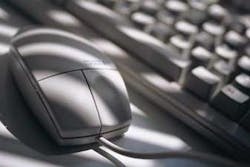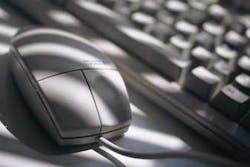It's just a click from hard copy to soft copy
by Victoria DaCosta, RDH, BS
Computers are not going away. We cannot escape them. What exactly is the effect all of this new technology on our dental hygiene workday? Where are we to put this new hardware in our operatory, a room barely able to accommodate one dental hygienist and one patient? Does your operatory look like a state of confusion with wires hanging everywhere, counter space lost, and things patched together?
If not, get ready; it will feel that way in your operatory soon!
Some offices have thought through space issues in the dental hygiene operatory, and I give them credit for planning ahead. But, for the most part, it seems like your average operatory was designed about 15 or more years ago.
Computerized dentistry is finally taking off, and dentists are rapidly purchasing hardware and software. Luckily, many doctors ask their dental hygienists for input.
If you are being consulted, congratulations! Your input will truly help the design of the hardware space in your operatory, as well as usage of the related software.
Most of us, however, are incorporating technology into our hygiene day with little training. To accomplish this feat, I designed a system to organize the hardware, software, and cyber ware training challenges. I call it the "greet, seat, treat, exit" approach to technology integration. It's designed to help hygienists go from hard copy (patient's paper charts) to soft copy (patient's computerized charts).
greet Before you greet patients, it is advantageous to go over your schedule and double check what is in the computer for each patient's hygiene appointment. This should be the same hygiene-type appointment that's in each patient's hard copy chart. Information is often lost during the transition from hard copy to soft copy. My rule of thumb is to always double check the charts.The moment the front office tells you your patient has arrived, your digital dental hygiene day begins. The greeting phase can involve steps such as time for building personal relationships with patients, taking pictures with the digital camera, and/or perhaps some spa dentistry. By clicking on the software clinical notes section in the patient's chart, you can create a note template. This can be used each time you enter personal notes for your patients. Patient alert and private notes about your patients are all displayed icons for the scheduled appointment for each individual patient.
seat Most dental management software programs have an icon for the patient chart. Click on this to go inside the patient's digital chart.With your patient greeted and comfortably seated, think about your workflow style. What do you usually do next? Health history, blood pressure, or review the last patient's appointment? Notations such as a patient's chief complaint, medicine updates, pH strip testing, past treatment plans, and intraoral and extraoral cancer exams can be documented on the computer.
You can integrate technology into this time for collecting data. For intraoral cancer exams, the intraoral camera is a great tool that builds value into the checks for cancer. You can also use the intraoral camera to look at perio and restorative needs.
If needed, take a still image to display for the doctor before an exam. This may be followed by digital X-rays. I now enjoy taking X-rays because with the computer I can see the X-ray image cone cuts immediately on the screen, and retake X-rays if necessary.
Voice-activated perio charting is a tool that makes my life easier. I no longer have to wait for help to record. The program also quickly calculates patient bleeding scores.
For patient motivation, I use the perio chart exam comparison report to show patient's last and current perio chart scores. This exam comparison report really motivates patients to comply with hygiene instructions.
It's fun to use "seat" time to practice on the patient education software programs. Most dental management software programs have oral hygiene and restorative pictures for a basic patient education review. Just click on the pictures to demonstrate your point.
treat With the patient underneath your dental light, what can you do next with your software? Assuming you use the voice-activated perio charting software, make mental notes, and, when finished, record your clinical findings on the computer. Click on the clinical notes or perio template icon for notations.You can record data such as oral hygiene, perio issues, occlusal wear, and patient habits. Then you can record what kind of appointment this is — a healthy recall, unhealthy recall, gingivitis treatment, periodontitis treatment, or perio maintenance appointment. You can create your own perio note template inside clinical notes to be used with each patient appointment.
One of the most important steps during this phase is the perio and restorative treatment planning. Every dental management software program has a patient section to record upcoming treatment. While the doctor is examining, you can record the treatment straight into the computer.
Not only will the front office receive this information immediately, but the computer will calculate cost and time units for each appointment.
You can also use the imaging software to show before and after case presentations with your patient's digital mouth photos. You will need training to use this software application.
exit This involves posting your patient's appointment to the ledger. Use the posting feature inside the appointment scheduler to record what was done and to make sure your patient's appointment category is correctly charged out.Scheduling hygiene appointments using the appointment scheduler allows you to put your patients where you want them. This will also tell you how much you are producing financially for the office. The computer will help you calculate your production by using the production view feature.
The best part about technology is that it can do most of the work for you in half the time of your manual hygiene day workflow. The challenging part of the digital dental hygiene day is feeling comfortable with the technology. Once you discover your digital dental hygiene workflow style, you'll realize that change wasn't something to panic about after all.
Victoria DaCosta, RDH, BS, is founder and president of Hy-Tech Solutions. A practicing dental hygienist for 18 years, DaCosta is a speaker, author, consultant, and an expert in the design of medical/dental software. She is also on the new technologies committee for the California Dental Hygienists' Association. DaCosta can be contacted at www.hy-techsolu tions.com.

